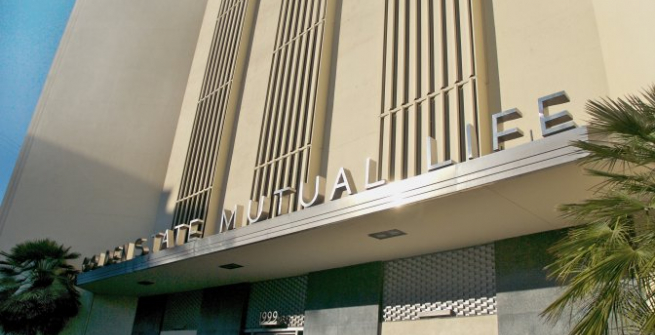In 1920s Los Angeles, insurance companies considered black Americans to be either uninsurable or extremely high risk. As a result, black people were routinely denied coverage or charged exorbitant premiums. Determined to fill this void, William Nickerson, Jr., Norman Houston, and George Beavers founded Golden State Mutual Life Insurance Company in 1925. They had two goals, to provide insurance and loans to black businesses and homebuyers and to create well-paying jobs for African Americans.
Also instrumental in the creation of the new firm were Norman O. Houston and George A. Beavers, Jr., both of whom shared Nickerson’s “dissatisfaction” with the way things were.

Unwilling to pay the $250,000 guarantee deposit required by the state and the high cost of an attorney to organize the company, Nickerson bought a copy of the Civil Code of California and started studying insurance law. He discovered an old, about-to-expire law that would allow the three to get a license with just a $15,000 deposit and 500 prepaid applicants. Houston raised the $15,000 by selling promissory Certificates of Advancement while Beavers secured the 500 paid applications. After receiving their license to operate on July 23, 1925, just 12 hours before the old law expired, the Golden State Guarantee Fund Insurance Company opened for business in a second-story room on Central Avenue in Los Angeles.

The company became very successful very quickly. Within three months it had outgrown that one room office and by 1928, Golden State had over 100 employees (the majority of them African American) and offices in Pasadena, Bakersfield, San Diego and Fresno. By 1945, Golden State Mutual Life Insurance Company (the name was changed in 1931) was the largest black-owned business west of the Mississippi River.
In 1948, Golden State Mutual commissioned Paul Revere Williams, the first African American architect admitted to the American Institute of Architects, to design its new headquarters building. The Late Moderne style building located at the corner of Adams Boulevard and Western Avenue was officially dedicated during a week-long celebration in August 1949.

Williams’ design for the building included two murals for the interior lobby. The murals by Hale Woodruff and Charles Alston illustrate the contributions of African Americans to the history and development of California.


The financial success of Golden State Mutual Life represented by its gleaming new headquarters was a source of great pride for the African American community.
Passage of the Civil Rights Act and greater integration began a slow decline for many black-owned businesses. Faced with declining revenues and waning influence, their continued profitability became a struggle. Golden State Mutual closed its doors in 2009. For over eight decades, Golden State had given Black Californians insurance at reasonable rates, home and business loans, and hundreds of white-collar jobs. By serving the black community when others wouldn’t, Golden State Mutual and other independent black-owned businesses provided avenues of advancement for generations of black Americans.
The iconic headquarters building still stands at 1999 W. Adams Boulevard. It was designated Los Angeles Historic Cultural Monument #1000 in 2011.
Further Reading
- Bound for freedom: Black Los Angeles in Jim Crow America by Douglas Flamming
- City Limits: African American Los Angeles from the Great Depression to the present by Josh Sides
- West Adams’ landmarks of African American history
- A brief history of the founding and development of Golden State Mutual Life
Blog post was amended on February, 12, 2020
